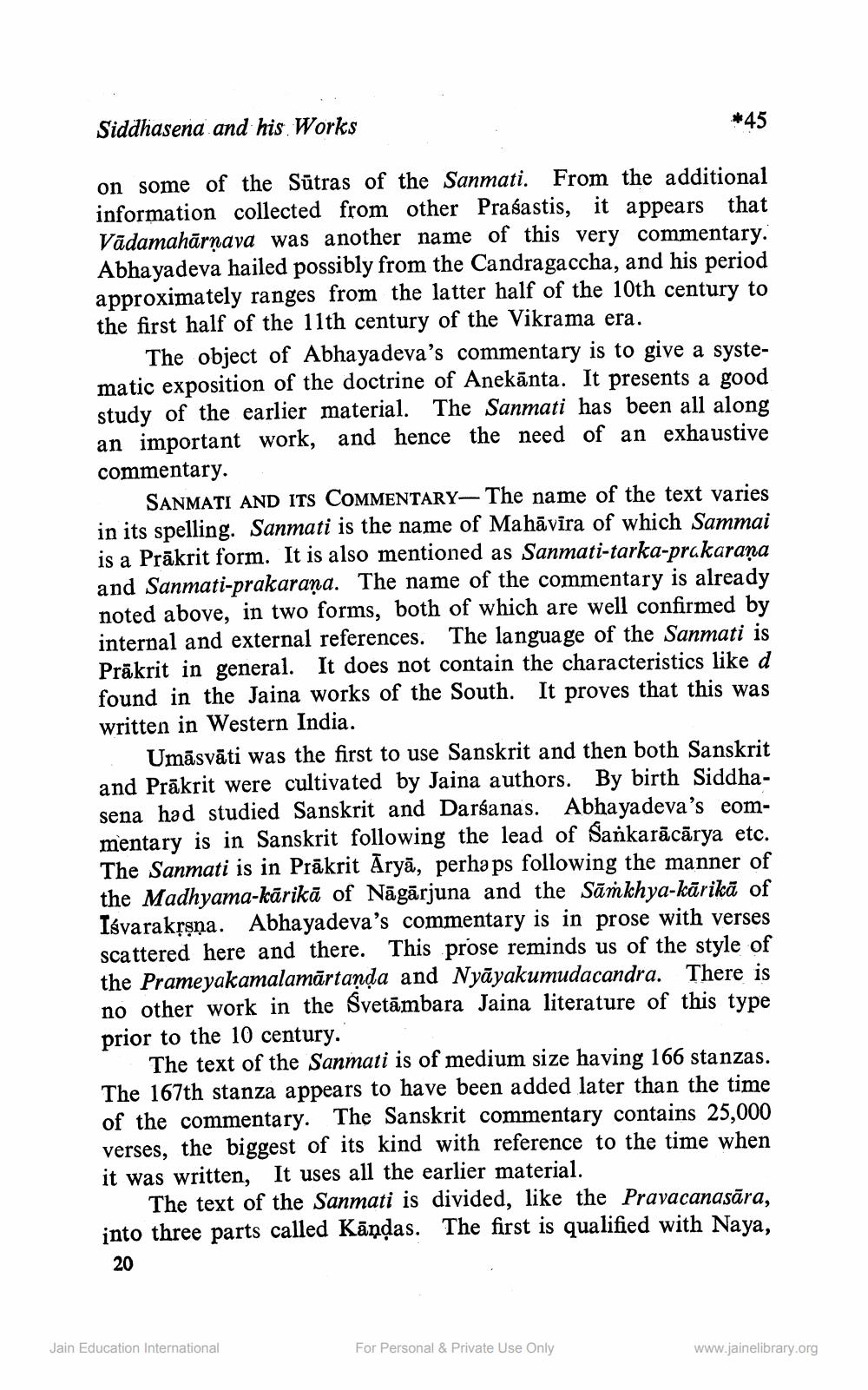________________
Siddhasena and his Works
on some of the Sutras of the Sanmati. From the additional information collected from other Prasastis, it appears that Vädamahārṇava was another name of this very commentary. Abhayadeva hailed possibly from the Candragaccha, and his period approximately ranges from the latter half of the 10th century to the first half of the 11th century of the Vikrama era.
*45
The object of Abhayadeva's commentary is to give a systematic exposition of the doctrine of Anekanta. It presents a good study of the earlier material. The Sanmati has been all along an important work, and hence the need of an exhaustive commentary.
SANMATI AND ITS COMMENTARY- The name of the text varies in its spelling. Sanmati is the name of Mahāvīra of which Sammai is a Prakrit form. It is also mentioned as Sanmati-tarka-prakarana and Sanmati-prakaraṇa. The name of the commentary is already noted above, in two forms, both of which are well confirmed by internal and external references. The language of the Sanmati is Prakrit in general. It does not contain the characteristics like d found in the Jaina works of the South. It proves that this was written in Western India.
Umāsvāti was the first to use Sanskrit and then both Sanskrit and Prakrit were cultivated by Jaina authors. By birth Siddhasena had studied Sanskrit and Darśanas. Abhayadeva's commentary is in Sanskrit following the lead of Sankarācārya etc. The Sanmati is in Prakrit Arya, perhaps following the manner of the Madhyama-kārikā of Nāgārjuna and the Samkhya-kārikā of Isvarakṛṣṇa. Abhayadeva's commentary is in prose with verses scattered here and there. This prose reminds us of the style of the Prameyakamalamārtaṇḍa and Nyayakumudacandra. There is no other work in the Svetambara Jaina literature of this type prior to the 10 century.
The text of the Sanmati is of medium size having 166 stanzas. The 167th stanza appears to have been added later than the time of the commentary. The Sanskrit commentary contains 25,000 verses, the biggest of its kind with reference to the time when it was written, It uses all the earlier material.
The text of the Sanmati is divided, like the Pravacanasāra, into three parts called Kandas. The first is qualified with Naya,
20
Jain Education International
For Personal & Private Use Only
www.jainelibrary.org




